The name Quang Nam was born in 1471. The current administrative name and standard spelling is “Quang Nam”. However, besides that, there is still the popular reading “Quang Nom”. So, which reading “Quang Nom” or “Quang Nam” came first?
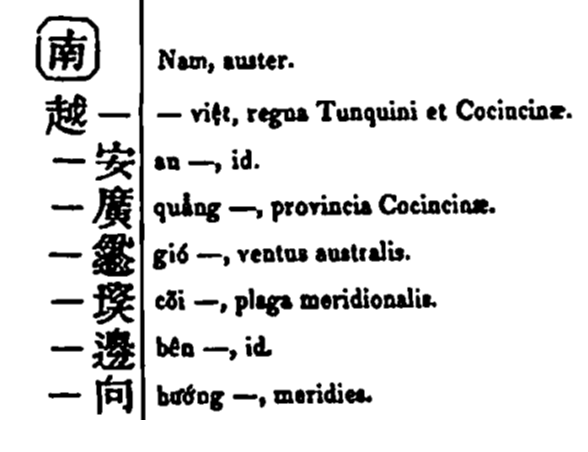
South, south and south
The two words "Quang" and "Nam" in the name Quang Nam are both written in Chinese characters, different from the word "Hue" which must be written in two Chinese characters "Thuan Hoa", or different from the name " Da Nang " which must be transcribed in two Chinese characters "Da" and "Nang/ Nang".
Accordingly, since 1471, the name Quang Nam has been written in Chinese characters 廣南 in many Vietnamese and Chinese documents. Even Chinese documents of the 16th - 17th centuries wrote the three words "Quang Nam country".
The two words “Quang Nam” in Latin characters appeared in connection with the formation of the Vietnamese national script. In the first half of the 17th century, “Quang Nam” was transcribed as “Quinan”, which did not match the current complete Latin characters.
It is possible that the two words “Quang Nam” in Latin characters first appeared in writing in the “Latin Annam Dictionary” by Pierre Pigneaux de Behaine (Bá Đa Lộc Bí Nhu; 1772-1773) and later in the “Dictionnaire Annamite-Francais” by JFM Genibrel (Saigon 1898).
The word “Nam” is a very important word, expressing the Vietnamese national consciousness - the consciousness of resistance to China. It is thanks to this consciousness of resistance that throughout the thousand years of Chinese domination, we were not assimilated or annexed into Chinese territory like other small countries at that time.
We consider China as the Northern country, then we are the Southern country. The Northern country has the Northern Emperor, then the Southern country has the Southern Emperor (Nam quoc son ha nam de cu - 10th - 11th century). We consider Chinese characters as Northern characters, then we have Southern characters (Nom script). China has Northern medicine, we have Southern medicine (Nam duoc than hieu - 14th century). Because of these things, Nguyen Trai concluded that "Northern and Southern customs are also different".
Nom is the script of the Southern people. Why is it called Nom and not Nam? That is because Nom is used to write the national language. The national language includes pre-Sino-Vietnamese sounds, Sino-Vietnamese sounds, post-Sino-Vietnamese sounds and sounds that are not Sino-Vietnamese sounds. Since it is a national language, it is called "Nom" and not "Nam" - according to the Sino-Vietnamese pronunciation.
The south wind blowing to the north is divided into two types: south wind (nam phong) and southeast wind (dong nam phong). However, south wind is also often understood as south wind. The folk song says "I pray to God for a swift south wind/ So that Lord Nguyen's boat can sail smoothly."
According to “Hoang Le Nhat Thong Chi”, the Nguyen (Anh) army annually went out to fight (Tay Son) with great prestige. Every time the south wind blew, the people of the towns said to each other: “The old Lord is coming!”. In the Van Uyen magazine Nam Phong, issue 2, volume 1, there was a song “Singing to celebrate the south wind” by Dam Xuyen Nguyen Phan Lang.
"Quang Nom motorbikes go away"
Phonetics change over time. For example, the sound “money” in the word “hét tiền” changes to “hét xiên” and recently is said by young people as “hét xêng”. This phonetic change has its own rules. Here is the relationship between “t” and “s/x” (tinh - sao, tiền –> xiên), the phenomenon of dropping “i” in “-ie” ( liên - sen, Biển - bà, xiến -> xên). Phonetic changes often start at central locations where there is exchange and among young people.
If we pay attention, we will see that Quang Nam people say "from the Tam Doi period" but rarely/do not say "from the Tam Dai period". Or the elderly in Dai An and Dai Cuong (Dai Loc) say the village "Quang Doi" but rarely/do not say the village "Quang Dai". "Quang Nam" is said as "Quang Nom", "lam" is said as "lom", "dap" is said as "dop". Why is there this phenomenon of "a" being said as "o" and "o"?
The 17th-century phonetic transcription (written in Latin) of the Quang Nam language by Western missionaries shows that when pronouncing the Quang Nam language with the "a" sound, the "o" sound is added.
Priest Cristoforo Borri, when in Dang Trong around 1621, heard people say "lam" and wrote the Latin word "laom", and in "Dutch" he wrote it as "Hoa Loam". This is evidence that the word "lam" in the early 17th century was pronounced like "lom". However, Alexandre de Rhodes wrote it as "lam" in the "Vietnamese - Portuguese - Latin Dictionary" (1651).
Chinese characters are a type of writing in which one character can be read in many ways. Many ways of reading within China. Many ways of reading in each country within the Chinese cultural area. For example, the same word “culture” with 2 Chinese characters 文化 is read as “wenhua” by the Chinese, “benka” by the Japanese, “munhwa” by the Koreans, and “van hoa” by the Vietnamese.
In addition, a Chinese character in Vietnam has 1 to 2 ways of reading, including Sino-Vietnamese reading and non-Sino-Vietnamese reading. Non-Sino-Vietnamese reading is divided into pre-Sino-Vietnamese reading and post-Sino-Vietnamese reading. Sino-Vietnamese pronunciation was formed during the Tang Dynasty, people took the 8th century as a benchmark, created by Chinese people who came to Giao Chau to teach Chinese characters using the Truong An phonetic.
Accordingly, the Chinese character 南“nam” has 2 readings, the “Nom” reading is the pre-Sino-Vietnamese reading, the “Nam” reading is the Sino-Vietnamese reading. Similarly, the “đốp” reading is pre-Sino-Vietnamese, “đạp” is Sino-Vietnamese. The case of “lồm” is more complicated. The Sino-Vietnamese reading of “làm” is “lùng”. The sound with the “ung” rhyme came after “uông”: tương -> chung, giông/trông -> chung. The sounds “ô”, “e” belonging to the pre-Sino-Vietnamese pronunciation transformed into “a” of the Sino-Vietnamese pronunciation. Therefore, the rhyme pattern “-ôm”, “-ốp” does not belong to the Sino-Vietnamese pronunciation pattern system and the sound “ô” comes before the sound “a”.
During the Northern domination, China only ruled and taught Chinese characters mainly in the Red River Delta, not reaching the Quang Nam region. Therefore, the indigenous people of Quang Nam were not strongly influenced by Sino-Vietnamese sounds, still preserving many ancient sounds before Sino-Vietnamese sounds or "older" Sino-Vietnamese sounds (reading the surname "vo" instead of "vu"). That is also the reason why we see the word "Champa" transcribed by Western missionaries in the 17th century as "Ciam" (read as "Chiem").
The joke "Quang Nom people ride their bikes to work" turns out to be older than "Quang Nam people ride their bikes to work".
Source


![[Photo] Nhan Dan Newspaper launches “Fatherland in the Heart: The Concert Film”](https://vphoto.vietnam.vn/thumb/1200x675/vietnam/resource/IMAGE/2025/10/16/1760622132545_thiet-ke-chua-co-ten-36-png.webp)
![[Photo] General Secretary To Lam attends the 18th Hanoi Party Congress, term 2025-2030](https://vphoto.vietnam.vn/thumb/1200x675/vietnam/resource/IMAGE/2025/10/16/1760581023342_cover-0367-jpg.webp)









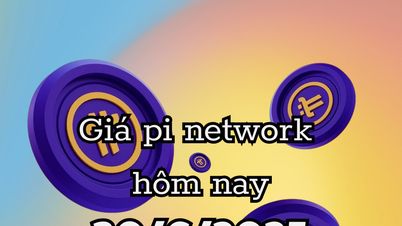





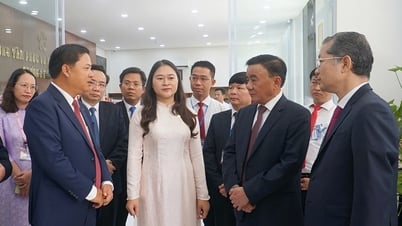












![[Video] TripAdvisor honors many famous attractions of Ninh Binh](https://vphoto.vietnam.vn/thumb/402x226/vietnam/resource/IMAGE/2025/10/16/1760574721908_vinh-danh-ninh-binh-7368-jpg.webp)



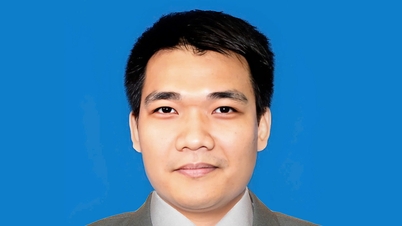

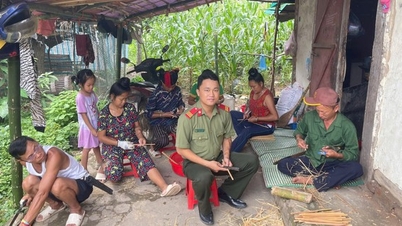
























![[Photo] Nhan Dan Newspaper launches “Fatherland in the Heart: The Concert Film”](https://vphoto.vietnam.vn/thumb/402x226/vietnam/resource/IMAGE/2025/10/16/1760622132545_thiet-ke-chua-co-ten-36-png.webp)











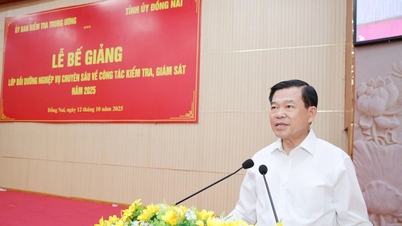


























Comment (0)